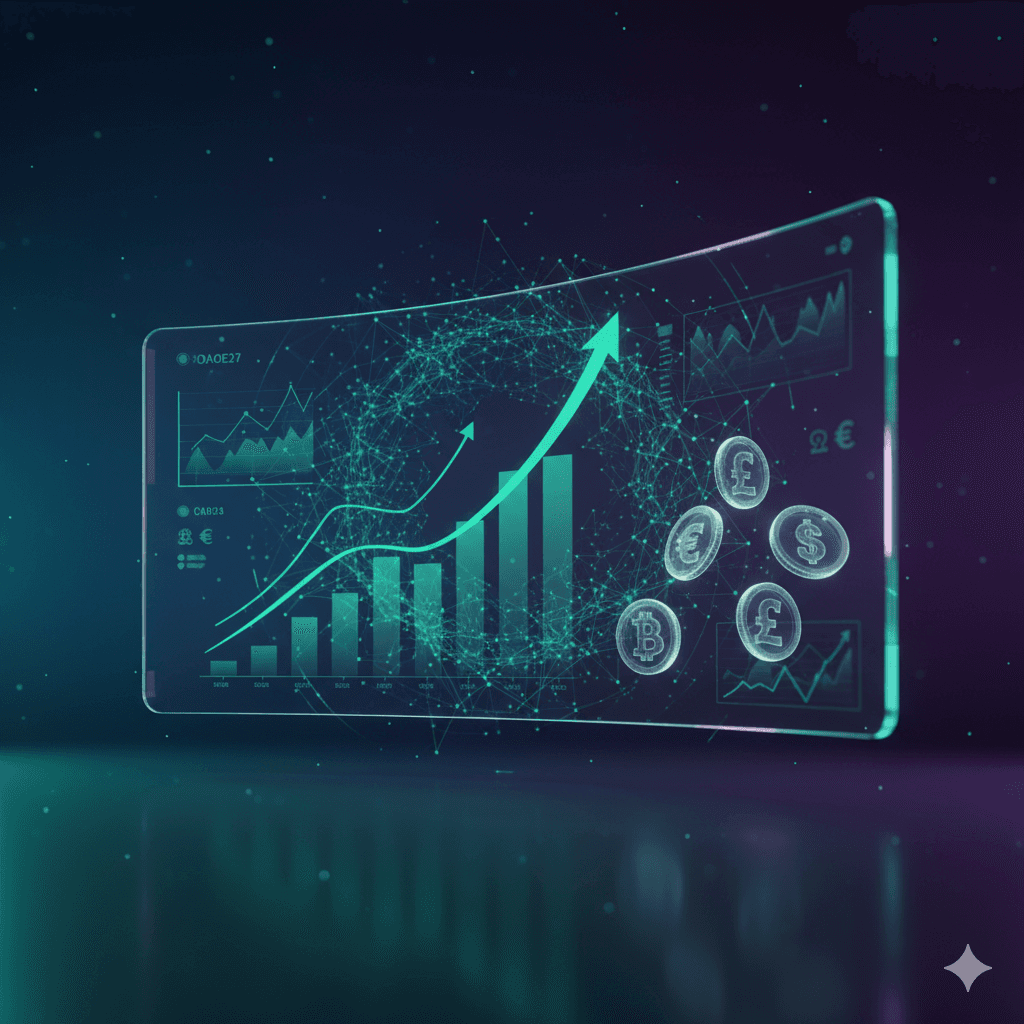Introduction: The Crowded Expense App Market
The personal finance app market has exploded in recent years, with hundreds of expense tracking applications competing for your attention. From simple receipt scanners to comprehensive financial management platforms, the options can be overwhelming. Choosing the wrong app means wasting time learning a system you'll eventually abandon, while choosing the right one can transform your financial life.
In 2025, the landscape has shifted dramatically from basic expense logging tools to AI-powered financial assistants that understand context, learn your habits, and provide intelligent insights. This guide cuts through the marketing noise to identify the features that actually matter, helping you select an expense tracker that matches your needs, lifestyle, and financial goals.
Whether you're a freelancer managing business expenses, a family coordinating shared finances, or an individual seeking better money management, understanding what distinguishes exceptional expense trackers from mediocre ones empowers you to make an informed decision. Let's explore the essential features, advanced capabilities, and critical considerations that should guide your choice.
Essential Features Every Expense Tracker Should Have
Before considering advanced AI features or premium capabilities, every expense tracking app must nail the fundamentals. These baseline features are non-negotiable:
1. Effortless Expense Entry
The primary barrier to consistent expense tracking is friction in data entry. Apps that require multiple steps, complex forms, or navigating through nested menus inevitably lead to abandoned tracking efforts. The best apps minimize friction through:
- Quick-add functionality: One-tap entry from the home screen
- Voice input: Natural language expense logging
- Smart defaults: Remembering frequently used merchants and categories
- Offline capability: Log expenses without internet connectivity
2. Intelligent Categorization
Manual categorization of every transaction is tedious and inconsistent. Modern apps should automatically categorize expenses with high accuracy, learning from your corrections to improve over time. Look for:
- Merchant recognition and auto-categorization
- Customizable category structures
- Ability to split transactions across multiple categories
- Tags for additional organization beyond categories
3. Comprehensive Reporting
Data entry is pointless without insights. Essential reporting features include:
- Spending by category: Visual breakdown of where money goes
- Trends over time: Month-over-month and year-over-year comparisons
- Budget vs actual: Clear visualization of budget performance
- Exportable reports: PDF and CSV options for tax preparation
- Custom date ranges: Flexible time period analysis
4. Multi-Device Synchronization
Modern life spans multiple devices—smartphone, tablet, computer. Your expense data should seamlessly sync across all platforms, ensuring you can:
- Log expenses on your phone, review on your computer
- Access data offline with automatic sync when reconnected
- Collaborate with partners or family members
- Never lose data due to device failure or loss
5. Data Security and Privacy
Financial data is sensitive. Essential security features include:
- Encryption: End-to-end encryption of all data
- Authentication: Biometric login (fingerprint, Face ID)
- Privacy policy: Clear explanation of data usage
- Local-first options: Ability to store data on device rather than cloud
- No selling of data: Business model not based on monetizing user information
Advanced Features That Make a Difference
Beyond baseline functionality, certain advanced features significantly enhance expense tracking effectiveness. These capabilities separate good apps from exceptional ones:
1. AI-Powered Insights and Predictions
Artificial intelligence transforms passive expense logging into active financial intelligence. Advanced AI features include:
Spending Pattern Analysis
AI identifies trends you might miss: "Your dining out spending increases 40% on weekends" or "You spend 3x more at grocery stores when shopping between 5-7 PM." These insights reveal the when and why behind spending, enabling targeted optimization.
Predictive Forecasting
Based on historical data, AI predicts future expenses: "Based on current trends, you'll likely spend $1,200 on groceries this month—15% above budget." Early warnings enable proactive adjustments rather than end-of-month surprises.
Anomaly Detection
AI flags unusual transactions that might indicate fraud, subscription billing errors, or forgotten recurring charges: "You've been charged twice for your gym membership this month" or "This $500 charge from an unfamiliar merchant is unusual—verify it's legitimate."
Personalized Recommendations
Rather than generic advice, AI provides context-specific suggestions: "You could save $75 this month by preparing 2 more meals at home instead of dining out" or "Consolidating your three streaming subscriptions could save $180 annually."
2. OCR Receipt Scanning
Optical Character Recognition technology eliminates manual receipt entry by extracting data directly from receipt photos. Quality OCR implementation should:
- High accuracy: 95%+ extraction accuracy on standard receipts
- Item-level detail: Capture individual line items, not just totals
- Multi-format support: Paper receipts, digital PDFs, and email receipts
- Image storage: Maintain receipt images for warranty and return purposes
- Tax categorization: Identify potentially deductible business expenses
3. Voice-Activated Expense Logging
Voice input reduces expense logging from 30-60 seconds to under 10 seconds. Effective voice features include:
- Natural language understanding: "I spent $45 on groceries at Whole Foods" automatically extracts amount, category, and merchant
- Hands-free operation: Voice-only logging while driving or otherwise occupied
- Context awareness: Understanding complex commands like "Split $80 dinner with Sarah"
- Multi-language support: Recognition in multiple languages for international users
4. Smart Budgeting Tools
Budget features range from simple category limits to sophisticated AI-driven recommendations:
Flexible Budget Types
- Zero-based budgeting: Every dollar assigned a purpose
- 50/30/20 methodology: Automated allocation to needs/wants/savings
- Envelope budgeting: Digital equivalent of cash envelope system
- Rolling budgets: Unused funds carry forward to next period
Dynamic Budget Adjustment
AI-powered apps adjust budgets based on actual spending patterns, seasonal variations, and changing circumstances rather than forcing static allocations.
Real-Time Budget Tracking
Instant updates showing remaining budget in each category, preventing overspending through awareness.
5. Collaborative Features for Families and Teams
If managing shared expenses, robust collaboration features are essential:
- Shared accounts: Multiple users accessing and contributing to same expense log
- Permission controls: Different access levels (admin, editor, viewer)
- Expense assignments: Track who made each purchase
- Split expenses: Automatically divide shared costs among participants
- Notifications: Alerts when partners log significant expenses
6. Integration Capabilities
Modern financial lives span multiple platforms. Valuable integrations include:
- Bank account linking: Automatic import of credit and debit transactions
- Investment accounts: Holistic view of net worth
- Accounting software: Export to QuickBooks, FreshBooks, etc.
- Tax preparation tools: Direct export to TurboTax or similar services
- Payment platforms: Sync with Venmo, PayPal, Cash App
Security and Privacy Considerations
Financial apps access sensitive data—account information, spending patterns, income details. Security must be paramount:
Data Encryption Standards
Look for apps implementing:
- AES-256 encryption: Military-grade data protection
- TLS/SSL: Secure data transmission
- End-to-end encryption: Data encrypted on your device, not just in transit
Authentication Methods
Strong authentication options should include:
- Two-factor authentication (2FA)
- Biometric login (fingerprint, Face ID)
- Device-specific authentication
- Automatic logout after inactivity
Privacy Policy Transparency
Read the privacy policy to understand:
- What data is collected
- How data is used
- Whether data is sold to third parties
- Where data is stored (jurisdiction matters)
- Data retention and deletion policies
Business Model Considerations
"Free" apps often monetize through data sales or aggressive advertising. Subscription-based apps typically offer better privacy since the business model is based on providing value to users, not selling user data to advertisers.
Free vs Premium: What's Worth Paying For?
Many expense trackers offer free tiers with limited functionality and premium subscriptions unlocking advanced features. Understanding what's worth paying for helps make informed decisions:
Features Commonly Limited in Free Tiers
- Transaction history: Free versions often limit to 3-6 months of data
- Export capabilities: Premium required for PDF reports or CSV exports
- OCR scans: Limited number of receipt scans per month
- Bank account syncing: Automatic transaction import reserved for paid users
- Advanced analytics: Detailed insights and predictions behind paywall
- Multi-device access: Free tier limited to single device
- Customer support: Premium subscribers receive priority assistance
When Premium is Worth the Investment
Consider upgrading to premium if:
- You're serious about financial improvement: Advanced features like AI insights and predictive analytics genuinely help optimize spending
- You handle many transactions: High-volume users benefit significantly from automation features like receipt scanning and bank syncing
- Tax season is painful: Export capabilities and comprehensive reporting can save hours of tax preparation time
- You need historical data: Multi-year trends and comparisons require unlimited data retention
- You want comprehensive support: Direct access to customer support resolves issues quickly
Cost-Benefit Analysis
Typical premium expense trackers cost $5-$15 monthly or $50-$120 annually. If the advanced features help you identify just $20 in monthly savings or optimize spending, the subscription pays for itself. Most users report saving hundreds to thousands annually through better financial awareness enabled by premium features—making the subscription cost negligible by comparison.
Conclusion: Making the Right Choice
Selecting an expense tracker is a highly personal decision influenced by your financial situation, tech comfort level, and specific needs. However, certain principles guide wise choices:
Start with Your Priorities
Identify what matters most to you:
- Simplicity: If you want basic expense logging without complexity, choose straightforward apps with minimal features
- Automation: If you want hands-off tracking, prioritize apps with bank syncing, receipt scanning, and voice input
- Intelligence: If you want actionable insights, seek AI-powered apps with predictive analytics
- Privacy: If data security is paramount, choose apps with strong encryption and transparent policies
- Collaboration: If managing shared finances, ensure robust multi-user features
Test Before Committing
Most quality apps offer free trials of premium features. Use trial periods to:
- Test actual daily usage workflows
- Verify OCR accuracy with your typical receipts
- Assess voice recognition quality
- Review reporting and analytics capabilities
- Evaluate customer support responsiveness
The Best App is the One You'll Actually Use
The most feature-rich app is worthless if it's too complex or time-consuming to use consistently. The best expense tracker for you is the one that fits seamlessly into your life, requiring minimal effort while providing maximum insight. Sometimes the "perfect" feature set matters less than intuitive design and frictionless operation.
Don't Be Afraid to Switch
If your current app isn't meeting your needs, switching to a better option is worthwhile despite the transition effort. Most modern apps offer data import from competitors, and the long-term benefits of using a superior tool outweigh short-term migration inconvenience.
The right expense tracker isn't just a tool—it's a partner in your financial journey, providing the insights and automation needed to achieve your goals. Choose wisely, and let technology do the heavy lifting while you focus on living your best financial life.
Related Articles
View all articles
How AI is Revolutionizing Personal Finance Management in 2025
Discover how artificial intelligence is transforming personal finance management with voice tracking, OCR scanning, and predictive analytics.
Voice-First Expense Tracking: Why Speaking Your Expenses is Faster Than Typing
Learn how voice-activated expense tracking can save you time and improve accuracy in your financial management.
